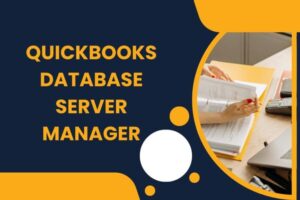
mergers & acquisitions services
In today’s fast-paced and ever-evolving business landscape, mergers and acquisitions (M&A) have become critical strategies for companies looking to expand their market presence, enhance operational efficiency, and foster innovation. However, the integration of two distinct organizations, particularly their technological infrastructures, remains one of the most challenging aspects of the M&A process. The technology stack integration post-merger plays a crucial role in ensuring a smooth transition, optimizing business operations, and maintaining competitive advantage. This article explores the key considerations and strategies for creating a technical roadmap for the integration of technology stacks in merged entities.
The Importance of Technology Stack Integration
The technology stack of an organization refers to the combination of software, hardware, and technical systems used to build and operate applications and services. It typically includes front-end frameworks, back-end servers, databases, development tools, cloud infrastructure, and more. When two companies come together, they often bring with them distinct technology stacks that may differ significantly in terms of infrastructure, systems, tools, and methodologies.
Merging these disparate stacks is vital because:
- Operational Efficiency: Different technologies may lead to inefficiencies, including duplication of software licenses, unproductive workflows, and inconsistent data management.
- Cost Reduction: A unified technology stack can lead to a reduction in overhead costs, such as software licensing fees, cloud infrastructure maintenance, and technical support.
- Scalability and Flexibility: Integrating complementary technologies can streamline scalability and ensure that the merged entity can adapt to future needs and technological advancements.
However, without a clear and comprehensive technical roadmap, the integration process can quickly become chaotic, leading to delays, additional costs, and potentially damaged relationships with customers, employees, and stakeholders.
Creating a Technical Roadmap for Technology Stack Integration
A well-defined technical roadmap acts as a blueprint for how the integration of technologies will be approached. This roadmap should guide the merged entities through the various phases of integration, from initial planning to final implementation. Key components of a successful technology stack integration roadmap include:
1. Assessment and Due Diligence
Before integrating the technology stacks of two companies, it is essential to perform a thorough assessment of the existing systems. This stage, often included in mergers & acquisitions services, involves evaluating both the strengths and weaknesses of the existing technology stacks. The goal is to identify which technologies are essential, which are redundant, and which systems need to be replaced or upgraded.
During this stage, the following steps should be taken:
- Evaluate System Compatibility: Determine how compatible each company’s technology stack is with the other’s, particularly in terms of integration with existing software, databases, and cloud platforms.
- Identify Key Stakeholders: Involve key stakeholders from IT departments, development teams, and business units to provide insights into the specific requirements of each technology stack.
- Establish Performance Metrics: Set clear performance metrics to measure the effectiveness of the integration process. These can include system uptime, transaction speed, data security, and more.
2. Developing the Integration Strategy
Once the due diligence phase is complete, the next step is to develop a strategy that outlines how the technology stacks will be integrated. This strategy should focus on harmonizing systems, aligning data architectures, and standardizing tools and platforms.
The integration strategy should cover:
- Choosing the Right Tools and Platforms: In many cases, one company’s stack may offer more modern, scalable, or secure options than the other’s. Selecting the most appropriate tools for the merged organization will help ensure long-term success.
- Data Integration and Migration: Integrating data from two companies’ databases can be complex, especially if they use different formats, structures, or technologies. A robust data migration plan should be developed to ensure that data is seamlessly transferred and that there is no loss of critical information.
- System Consolidation: Identify opportunities for consolidating redundant systems or tools. This will reduce operational complexity, lower costs, and minimize the need for ongoing maintenance of multiple systems.
- Addressing Security and Compliance: Both companies likely have different security protocols and compliance requirements. The integration strategy must account for these differences to ensure that data privacy and regulatory standards are maintained.
3. Execution and Implementation
The execution phase of the roadmap is where the actual integration takes place. This involves implementing the plans developed in the strategy phase and systematically merging the two technology stacks. Depending on the size and complexity of the merger, this phase can take several months or even years to complete.
During execution, key actions include:
- Data Migration and System Consolidation: As per the integration plan, data should be migrated to new systems, redundant systems should be decommissioned, and new platforms should be set up.
- Testing and Quality Assurance: Rigorous testing is essential to ensure that the integrated systems are functioning as expected. This may involve testing individual components, such as databases or APIs, as well as testing end-to-end workflows and user interfaces.
- Employee Training: The integration of technology stacks often requires employees to learn new systems and workflows. Training programs should be provided to ensure that staff can work effectively with the new tools and platforms.
4. Post-Integration Monitoring and Optimization
Once the initial integration is complete, the final stage involves continuous monitoring and optimization. This phase is essential to ensure that the technology stack remains efficient and can scale with the evolving needs of the merged entity.
Post-integration activities include:
- Performance Monitoring: Continuously track the performance of integrated systems to ensure that they are operating at peak efficiency. This includes monitoring server performance, network uptime, and application speed.
- User Feedback: Gather feedback from users across the organization to identify areas where the technology stack can be further optimized or where additional training may be required.
- Continuous Improvement: Regularly evaluate new technologies and trends in the market to ensure that the merged entity remains competitive. This may include upgrading systems or adding new capabilities as the business grows.
The Role of Mergers & Acquisitions Services in Technology Integration
The integration of technology stacks is a complex and nuanced process that requires careful planning, execution, and ongoing optimization. Many organizations rely on mergers & acquisitions services to guide them through this process. These services help companies navigate the technical and strategic challenges of integrating technology systems, providing expert advice, tools, and frameworks to ensure a seamless transition.
With the right M&A advisory services, organizations can mitigate the risks associated with technology stack integration, enabling them to harness the full potential of their combined technological capabilities and achieve long-term business success.
Conclusion
Technology stack integration is a crucial element of the mergers and acquisitions process, with the potential to significantly impact the success of the newly formed entity. By following a structured technical roadmap, companies can streamline the integration process, improve operational efficiency, and position themselves for long-term growth. Leveraging mergers & acquisitions services can also provide invaluable expertise in navigating the complexities of this process, ensuring that the technology infrastructure of the merged companies is optimized for future success.
References:
https://trendtracker.us/balance-sheet-impact-of-ma-purchase-accounting-considerations/






